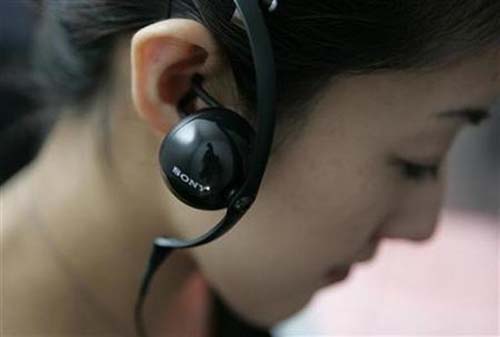
Science working to understand the healing power of music
Tala Jarjour
Music has fascinated, captivated and intrigued humans for as long as they have been around. From the oldest finds relevant to humans and their activity, especially social activity, it is thought that sound making with the body or with tools has always accompanied human life. In our present day, as in recent history, all cultures are known to have rituals that feature some kind of sound making, known to most readers of these lines as music.
Music often accompanies events of religious significance or moments of transcendental meaning. Sound making is also part of how we humans communicate with each other and with the world around us. Essentially, all forms of sound or music making are, in reality, much more complex than what they are commonly thought to be. But one kind of complexity is coming increasingly under the spotlight: How music affects us internally.

While every possible type of music study has tackled this question in one way or another, the relatively recent involvement of neuroscience, especially neuroimaging, has opened up new possibilities in understanding how and why certain sounds affect us in the ways they do. But the process of bringing together previously divergent forms of scientific inquiry is not a seamless one.
There are, on the one hand, a number of fields that study the various types of music around the world and their histories, typically from cultural, historical and technical points of view. On the other hand, the knowledge gained and accumulated by people who make music — the musicians or performers — is equally deep and it, too, builds on long traditions of experiential knowledge. Finally, over a relatively small number of years in the long story of humans and music, experimental science is becoming increasingly interested in studying this phenomenon, thanks to recent developments in technologies that observe, measure and capture images of neural and brain activity concerned with music. But perhaps the field of knowledge that has for the longest time been most closely attuned to how music affects people and changes them is music therapy.
Music therapy is a process by which a person or a group of people with a particular set of pathologies engage with a therapist — the music therapist — for the purpose of treatment. Music therapy sessions may involve listening in some cases, while in other cases patients may engage in music making through particular, purposefully designed activities. Some scientists categorize music therapy as a psychosocial intervention. In most formalized settings, music therapy sessions follow a prescribed course of action and proceed according to a professionally determined treatment plan with specific goals in mind. Therapists are trained to engage with patients according to their particular needs, and aim to forge individual therapeutic relationships with their patients. Music therapists are trained by professionals and must be licensed before conducting therapeutic practice.
Some countries are more advanced than others in the level of therapy training available.
Recent research in neuroscience has found credible evidence of the effectiveness of music therapy interventions in dementia or Alzheimer’s disease, depression and autism. Music therapy works in ways that are not yet completely understood, but its effectiveness in treating diseases that influence memory has been shown to be of such a quality that it allows patients to maintain cognitive and learning abilities even while the disease is affecting language. That is the case, Hervé Platel, professor of neuropsychology at the University of Caen in France, believes because the pathways responsible for processing music in the brain are different from those that process language. They are also complex and involve multiple parts of the brain. Moreover, because the brain is a dynamic organ, stimulating it with music can help delay the progression of the cognitive symptoms associated with its function. But the brain is not only responsible for cognition; it also has a lot to do with emotion.
This thing that moves between us through sound waves is nothing short of a wonder.
On human emotion, the power of music is hardly debatable. Many famous stories, including those of biblical figures such as David and mythical figures such as Orpheus, as well as numerous children’s stories in multiple cultures, are examples of the emotional power of music. Recent scientific research has shown that, through the emotional effect music has on humans, it can be an effective intervention for depression. Music does not replace other therapies, such as talk therapy or pharmacological therapy, but it can have an enhancing effect. Music therapy has also been shown to be effective for prematurely born babies in French hospitals; and, through rhythm and movement, it has shown effectiveness in helping autistic children with attention difficulties and behavioral problems.
Whether we call it music, chant, recitation or something else, this thing that moves between us through sound waves and which we normally perceive through our ears, brains, emotions and bodies, is nothing short of a wonder. For some, music is what they reach for when they are sad, for others it is what they crank up when they are happy or angry, or what they withdraw to in moments of quiet meditation, desperate supplication or private prayer. In some parts of the world, chief among them being the Middle East, making music is closely associated with its emotional power.
Music, this gift which humans can share in spoken and unspoken ways, has the ability to help in the healing of our minds and bodies. Musicians and therapists have known this for a long time. Now science is finding a new window into its secrets.
The writer is author of “Sense and Sadness: Syriac Chant in Aleppo.” She is visiting research fellow at King’s College London and associate fellow at Yale College.
